Published in Rapid Journal Vol. 14 No. 2 4th
RA 9850
President Gloria Macapagal-Arroyo officially signed into law Senate Bill 1424, authored by Majority Leader Juan Miguel Zubiri, as Republic Act No. 9850 “An Act declaring Arnis as the National Martial Art and Sport of the Philippines“ on December 11, 2009.
RA 9850 makes Arnis as a requirement for the Physical Education (PE) course of the Department of Education, Culture, and Sports (DECS). The Philippine Sports Commission (PSC) is the lead agency tasked to implement RA 9850. The PSC will be inscribing the symbol of Arnis, that of the fighting sticks, in its official seal.
Those who signed the bill into law include Senators Manuelito “Lito” Lapid, Juan Miguel F. Zubiri, Mar Roxas, Richard Gordon, Ramon “Bong” Revilla, Jr., Aquilino Pimentel, Jr. and Representatives Arthur Pingoy, Jr. (2nd District, South Cotabato), Pryde Henry Teves (3rd District, Oriental Negros), Cesar Jalosjos (3rd District, Zamboanga del Norte), Nanette Castelo Daza (4th District, Quezon City), and Narciso Santiago III (Party-List, ARC).
It has been taught in schools that Sepak Takraw is the national sport of the Philippines and Dr. Jose P. Rizal is the national hero, alongside the national flower (Sampaguita), national tree (Nara), national bird (Philippine Eagle), etc. However, contrary to popular belief, no law or proclamation had named a national sport or national hero. Sepak Takraw is a Thai-Malay sport which many believe is Filipino.
Previously, there was HB030.64 “Act declaring Sikaran as the National Martial Art of the Philippines” filed by Cong. Isidro S. Rodriguez Jr. of the 2nd District of Rizal with co-authors Cong. Michael John R. Duavit, Cong. Ronaldo V. Puno and Cong. Victor R. Sumulong. It was filed on September 30, 2004 and was read on October 26, 2004.
THE LONG PATH TO RECOGNITION
The passing of RA 9850 is long overdue. The governments of neighboring Asian countries had given their respective martial traditions pioneering recognition and support years way ahead of the Philippines. Judo and Karate-do were successfully implemented in the Japanese school system even before WWII. China has a well oiled Wushu program and sends well trained athletes to spread their Wushu overseas. Korea unified the various kwans “schools (Hangul)” after WWII into what is now the Olympic sport of Taekwondo. The Thai Royalty had always patronized the development of Muay Thai among the Siamese populace.
The seminal efforts to integrate Arnis into the school system can be traced back to the 1970s with proclamations such as DECS Order No. 26, Series of 1975, which mandated concerned parties to engage in liaison with the National Arnis Association of the Philippines (NARAPHIL), then the newly formed National Governing Body (NGB) for the Filipino Martial Arts (FMA), for their Sports Development Program on Arnis. Other orders followed, among them DECS Order No. 58, Series of 1990 and DECS Memo No. 294, Series of 1995.
Senator Orlando “Orly” Mercado filed Senate Bill 280 on July 6, 1992 which required the inclusion of the study of Arnis as a Physical Education (PE) course in the secondary and tertiary level.
Cong. Juan Miguel F. Zubiri of the 3rd District of Bukidnon, with co-authors Cong. Raul V. Del Mar and Cong. Narciso D. Monfort, filed HB026-49 “Act declaring Arnis as the Philippine National Sport” on August 22, 2001. It was read on August 28, 2001 and was later substituted by HB05284. HB05284 was authored by Cong. Zubiri and co-authored by Cong. Lorna C. Silverio, Cong. Cecilia T. Taganas Layus, and Cong. Orlando A. Fua Jr. on October 4, 2004 and was read on October 9, 2004. The bill was approved on the second and third readings on November 18, 2002 and December 17, 2002 respectively. The house vote was 155 for yeas and none for nays and abstain. It was transmitted to the Senate on December 18, 2002.
Senate Bill 1424 is an “Act declaring Arnis as the National Martial Sport of the Philippines” was approved by the House on November 15, 2005, transmitted to on November 23, 2005 and received by the Senate on November 23, 2005.
DEFINITION
Arnis is the Filipino corruption of the Spanish Arnes “Trappings, armor,” which alludes to the arnisador’s reputed ability to defend himself as if he is protected by an armor. Before the term arnis was used, as in the case of Florante at Laura in the 1800s, Eskrima was used to refer to the Filipino way of fighting with weapons. Eskrima is the Filipino corruption of the Spanish Escrima “Fencing,” in reference to the blades used as weapons in the art.
HISTORICAL OVERVIEW
A lot has been written that Arnis, or Kali as some would have it, was used by the Mactan Chief Lapu-Lapu in killing the conquestadores Ferdinand Magellan in the Battle of Mactan in 1521. The only existing historical record of this battle was that of Pigafetta. Pigafetta was very meticulous in his recording of the Cebuano’s culture but he have not mentioned that Lapu-Lapu did practice a martial art called Kali, this inspite of the fact that the Italian chronicler did list the weapons used by the natives and praised their skill in combat.
The early history of the Filipino Martial Arts (FMA) was not systematically recorded by the early Filipinos. Information than can be established are those that can be derived from historical records, archaeological finds, linguistic studies, and research on related scientific fields. Much of what is passed on today as FMA history are oral traditions and most that find their way in cyberspace are unverified claims, distortions, and assumptions.
Nevertheless, it is beyond doubt that Filipinos were efficient with various forms of blades, sticks, daggers, and other weapons. It is a documented fact that many arnisadors/eskrimadors who fought as regular soldiers or guerillas in World War II used their skills in facing the Japanese in hand-to-hand combat.
The weapons used will generally dictate how an arnisador will manipulate his weapon. The Filipino Martial Arts (FMA) as a whole is a fusion of the martial traditions of the various races that have inhabited or occupied the archipelago or traded with the natives. One visible influence is from the Spaniards, who themselves were among the best fencers in Europe during the renaissance Period.
SPREAD OF ARNIS
Arnis was well and alive in the more remote places of the Philippines during a good part of the 20th Century but did not get enough attention in the more urbanized areas up until it became a hit overseas, particularly in the US. The newer generation went for Taekwondo, Karate, Judo, Aikido, and other Asian Martial Arts.
This was partly due to the fact that the early 20th Century practitioners of Arnis were fighters more than sportsmen, fighting with blades, sticks, knives, and what have you. Traditional training was contact oriented and less often than not training ends with blood. Since their skills were for survival, arnisadors were reluctant to teach their arts. If they ever did, they made sure they kept the more dangerous techniques for themselves. Commoditizing Arnis for mass consumption then was unheard of.
The gradual rise of Arnis to prominence started when the National Arnis Association of the Philippines (NARAPHIL) was formed in 1975 to unify various schools. The famed Doce Pares of Cebu played a major role during this evolutionary stage of sport Arnis.
With the passing of time, Arnis was imported by Filipinos overseas, especially in the US, and it grew in popularity. Today, foreigners visit the Philippines to study directly from the grandmasters.
The efforts of both NARAPHIL and Arnis Philippines (ArPi) had evolved the sportive aspect of Arnis, making it more viable for public acceptance.
Arnis was included in the 1991 and 2005 Southeast Asian (SEA) Games and is played in all 5 clusters of the Philippine Olympic Festival (POF) and 17 regions in the Palarong Pambansa.
NAT’L SPORT ASS’N
The National Arnis Association of the Philippines (NARAPHIL), formed in 1975, was the first National Sport Association (NSA)/National Governing Body (NGB) for the Filipino Martial Arts (FMA). Then Armed Forces of the Philippines (AFP) Chief of Staff Maj. Gen. Fabian C. Ver was its first president.
Since NARAPHIL was closely related to the Marcos regime, it lost its status as the NSA for FMA right after President Ferdinand E. Marcos was overthrown by the People’s Power and replaced by Corazon “Cory” C. Aquino (D: 2009), the widow of the late Sen. Benigno “Ninoy” Aquino Sr. (D: 1983). Arnis Philippines (ArPi), founded as the Philippine Arnis Federation on July 11, 1986, became the next government recognized NSA for Arnis up to today. Raymond S. Velayo is its first president and to this day continues in such a capacity.
Arnis Philippines (ArPi) was incorporated by Velayo, Grandmaster Rolando Pintoy (a.k.a. Roland Dantes), Grandmaster Ernesto C. Presas, Rene Tongson, Diwa Sahagun, Jeremias V. de la Cruz, and Mario D, Malicsi with the Securities and Exchange Commission (SEC) on August 20, 1986.
Arnis Philippines (ArPi) is the 33rd official member of Philippine Olympic Committee (POC) and recognized by the Philippine Sports Commission (PSC).
The objectives of Arnis Philippines (ArPi) are 1) to be a major force in preserving our culture and the dying art of Arnis, 2) to consolidate and unite the different factions and groups of Arnis aficionados, and 3) to develop the sport aspect of Arnis for and in the hope of its inclusion in major sports events like the South East Asian Games (SEA Games), Asian Games, and ultimately the Olympics.
Subscribe to:
Post Comments (Atom)
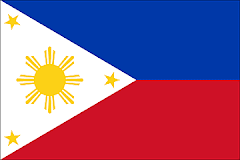


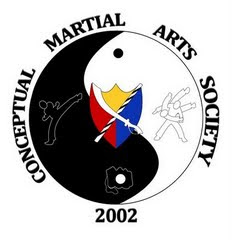


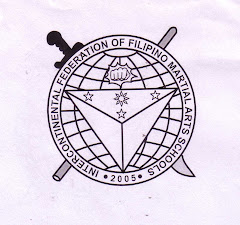

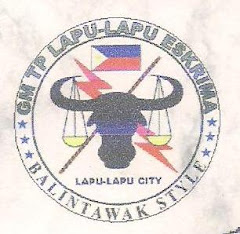






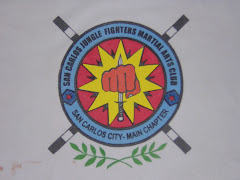



No comments:
Post a Comment